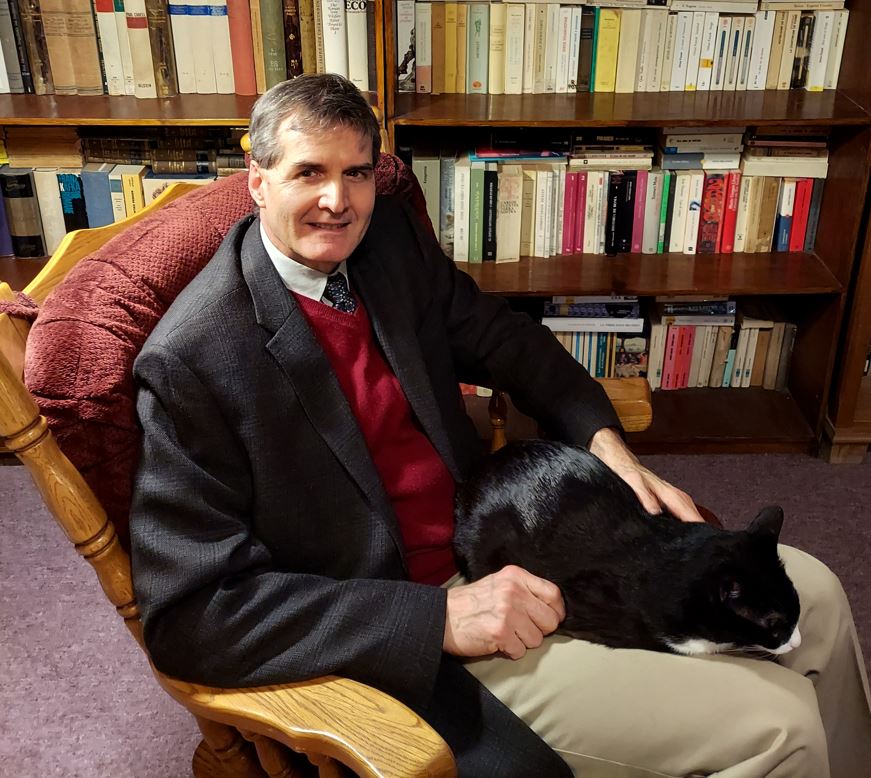
Dear Professor Arguelles,
As requested, here I’ll copy and paste my Youtube comments (including my earlier comment about African literatures!) so that you may provide a more detailed response for all to access! Here’s the post:
I have a few outstanding questions though about the efficacy of the 95% comprehensibility principle, especially in reference to a technique you once detailed in an old HTLAL post from years ago. In my own experience learning languages, it simply hasn’t been possible to attain anywhere close to 95% comprehension until I’ve already reached quite an advanced stage. Most of my grunt work slogging through the intermediate stages has been spent either intensively reading with a dictionary at hand or reading and rereading extensively with a gratuitous margin of ambiguity – let’s say between 50 – 80% known words.
Years ago on HTLAL you mentioned your journey with Russian involving an intense extensive-reading schedule where you read an original Russian work alongside a translation at hand – working progressively paragraph by paragraph through each until you could read chapters and eventually the entire novel cover-to-cover with a high degree of understanding and pleasure. This post revolutionized the way I approached reading exercises, and has since been my go-to for reading practice in the languages I’ve learned; not only does it allow one to approach and enjoy texts that fall outside of this tenuous range of comprehensibility, but it also fuses extensive and intensive reading in a way that allows one to recognize a large number of words based on repeated exposure to an author’s idiolect instead of repetitive dictionary searches or simply ignoring potentially relevant words.
Could you perhaps give your thoughts on this method, especially in comparison to the “realistic reading” approach mentioned in your more recent video on Advice for Reading Literature in Foreign Languages (https://youtu.be/mO06yRLUdVk)? For reference, here are a couple of my outstanding questions regarding the efficacy of “realistic reading” method in comparison to above mentioned unnamed strategy:
1) how tenable is realistic reading at the different stages of comprehension (A2 – C1), especially in regards to text selection / availability and crossing level bridges? (e.g. jumping from young adult novels to fiction, works of literary merit, etc)
2) What degree of unknown words / ambiguity would suffice for successive application of the above mentioned strategy?
3) In your opinion, which of these methods have been more successful for you, in terms of both measures of enjoyment and efficacy?
As requested, here’s a link to the original HTLAL post where you first detailed your thoughts:
http://how-to-learn-any-language.com/forum/forum_posts.asp?TID=245&PN=0&TPN=1
Additionally, here is a (slightly more expansive) list of African literature books of significant cultural importance: Mũrogi wa Kagogo by Ngũgĩ wa Thiong’o, Kintu by Jennifer Makumbi, ክብረ ነገሥት (Kebra Nagast),The Floods by John Ruganda, Mhudi: An Epic of South African Native Life a Hundred Years Ago by Sol Plaatje, and አዲስ ዓለም (Addis Aläm) by Heruy Wolde Selassie.
Thank you for all that you do!
Lucas Preuth
My reply:

Dear Lucas,
Thank you for writing in with such an important question. Many others have also told me that my old HTLAL post about learning to read Russian literature by means of working through and weaning oneself off of a parallel translation has been most useful to them. I am currently trying to get to the many Q&A’s, such as this one of yours, that came in during the first year of the Academy, but when I have caught up with these, I do plan on going back to those HTLAL posts like this one that people have indicated were most helpful and updating them here.
Before I answer your three questions directly, let me give an overview of four different techniques for learning to read in a foreign language to clarify the terms for those who might come upon this post without having seen or read the sources you mention.
The traditional, tried-and-true, most scholarly and academic way of learning to read a text in a foreign language is to simply got at it with a dictionary in one hand and a reference grammar in the other – in recent decades this has been dubbed intensive reading (in contrast with extensive reading in the next paragraph). This is demanding, but it does ultimately work. In fact, you will get better at both the technique and the language with practice, so that there is a modicum of scholarly satisfaction in it, if not pure pleasure. The advantage of this method is that you can get started right away. Indeed, the long standing approach for learning Sanskrit was to just start reading Lanman’s Sanskrit Reader, looking up every single word in the glossary and following the index to Whitney’s Sanskrit Grammar to read about its grammatical features and thus learn the language by reading it in this fashion.
In recent decades, the term extensive reading, as mentioned above, has been used in contrast to this to describe continuous, uninterrupted, pleasure reading so that learning of both content and vocabulary can take place without frustration. The key idea here is that the reader should choose books (novels in particular, that is, longer connected narratives) that interest him and read them straight through for the story line; if the books are at the right level, his vocabulary should grow without use of a dictionary by force of the context and frequency with which he sees new words. The right level is 98% comprehension, meaning that out of every fifty words on the page, one is unknown to you (and not, unfortunately, 95% as you wrote, which would would mean that you would not know one word out of every twenty). This is a great technique when you are at that level, but, as you wrote, the trick is getting to that level. In point of fact, this technique was described and developed by applied linguists and pedagogues such as Paul Nation mainly in regards to children developing reading skills in their native language. It works exactly the same for adult foreign language learners when you can finally get to that level, but you need to use other techniques to get there first, such as intensive readings or the other two that I have described.
You summarized the first of these, from my HTLAL post, so well that I need not say more here, but as you note, I did not give it a particular name at the time, but it perhaps needs one now so that we can compare it and contrast it with others, so let’s call it the text+translation technique. In answer to your question #2, this is something that one can start doing with low comprehension, say 80%, if you are content to compare and contrast on a sentence by sentence level at first.
Finally, in my video on advice for reading literature in foreign languages, I described what I here call realistic reading because it is more realistic to look up some words than all (intensive reading) or none (extensive reading). The key here is to read portions of a text (pages, chapters, etc.) multiple times instead of laboring over it (intensive reading) or just going straight through it (extensive reading). The first time you read it – ideally shadowing along with an audio book – you get the gist of what is going on. Upon repeat reading aloud on your own, you will understand even more, and as you do this, you can highlight words that you don’t know. Then you can look at the text and see which of those words are truly blocking your comprehension (generally verbs, and sometimes nouns) and which are just not letting you get all the details (adjectives, adverbs, etc.). You then look up and write down those key words, and finally read the text again, this time understanding them, before you move on to the next section. This is a technique that you can use with 95% comprehension, or perhaps even 90%.
Comparing and contrasting the text+translation technique with realistic reading, I have found them both equally efficacious and equally enjoyable. As I just indicated above, you can start doing the text+translation technique slightly earlier in your studies than you can do realistic reading, and it is a good stepping stone toward it – provided the necessary translations exist.
I hope this answers your questions, but we can discuss this further if not.
Wishing you satisfying reading in a variety of tongues,
Alexander Arguelles

